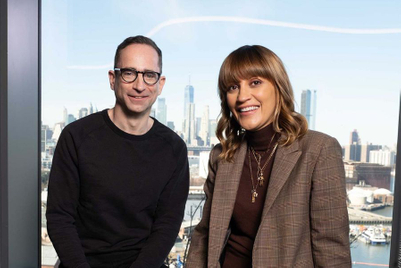
Please see all of our Spikes Asia 2014 coverage here
According to Barry Wacksman, R/GA's chief growth officer, building deep business ecosystems is the future for agencies. “Creating 30-second TV spots used to be our business," he said. "Now it’s just a small part of the bigger picture.”
The shift has impacted clients, agencies, ideas and data over the last decade, presenting an opportunity for R/GA to become more deeply involved with its clients. And the relationship isn’t just parasitic—but one that is symbiotic.
Launching R/GA accelerator in 2013 to help grow startups, the agency has raised the bar with a new level of commitment. It now has equity investments in over 30 startups.
As the client’s business grows, R/GA grows too, and the return can be exponential. “We know it’s hard for startups at the start, so we take equity instead of payment,” Wacksman said. “It’s a new long-term income stream and a future model for agencies.”
Key lessons from Wacksman’s presentation on transformation across the client, agency, ideas and data segments:
Client strategy evolves
Towards functional integration
- In the 20th century clients employed horizontal integration to dominate categories. Example: Coca Cola, acquiring related brands over 125 years. They also sought the vertical integration of owning a supply chain.
- In the 21st century those strategies have lost their effectiveness.
- Now it’s about functional integration, which means building a ‘connected ecosystem’.
- The consumer is in the centre and an ecosystem is built around them. Examples: Apple, Google and Amazon are pioneers of this model.

Creating stories and systems
- Going from 30-second TV spots to creating stories and systems.
- Example: Nike SB app, an interactive taxonomy of every skateboarding trick. Launched with celebrity skaters to develop the trick taxonomy, it allows users to track their own progress and submit videos via social media. Content created links to Nike retail screens.
Agencies redefined
- Agencies are no longer just agencies (below). The focus is on building business transformation; advertising is one piece of the bigger picture.
- Example: R/GA Accelerator helps to build startups from the very beginning.

Ideas: top down, bottom up
- Old model: brands talk down to the consumer; starts with the big idea and storytelling.
- New model: starts from the bottom up; it’s about user behaviour and is rooted in utility.
- Powerful advertising happens when you bring the two things together. It’s what makes it work - when you have a story to tell from above and an underlying behavioural activity (below)
- Example: Beats 2012 Olympics campaign, 'Hear what you want', campaign and
- “The game before the game” World Cup campaign.
- Beatsmusic.com is an example where R/GA created the brand, the service/product, and TV spots in a unique ecosystem.

Big data to earned data
- From big data to earned data: the most intimate and important data.
- Example: FlavorPrint helps people discover flavourful food using an algorithm for finding food and flavours that consumers like. It also recommends and picks dishes and recipes for dinner. The algorithm gets smarter each time.
Campaign’s observation: Breaking the mould of traditional agencies isn’t easy. RG/A has built a compelling case on the back of its work with Beats, showing that if agencies are willing to change their focus, they can become equally entrepreneurial. However, Wacksman apparently didn't win over everyone in the room.


.jpg&h=334&w=500&q=100&v=20250320&c=1)


.jpg&h=334&w=500&q=100&v=20250320&c=1)
.jpg&h=334&w=500&q=100&v=20250320&c=1)
.jpeg&h=334&w=500&q=100&v=20250320&c=1)


.jpg&h=334&w=500&q=100&v=20250320&c=1)




.jpg&h=268&w=401&q=100&v=20250320&c=1)
.jpg&h=268&w=401&q=100&v=20250320&c=1)

.jpg&h=268&w=401&q=100&v=20250320&c=1)
.jpg&h=268&w=401&q=100&v=20250320&c=1)